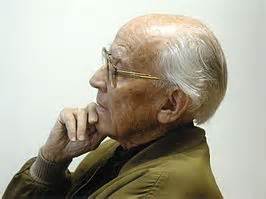Eriksson, Olsson, and Rautavaara-- our nod toward the North.
Chorale will not sing much Scandinavian or Baltic music on its spring concert, nor on its tour of the Baltic countries later in the summer. This is not our norm: we tend to sing a large amount of music from that part of Europe, and really enjoy it. But we assume that audiences in those countries will come to our concerts because they want to hear something new and different, something more typical of an American choir; if they are choral enthusiasts, they are likely to be plenty familiar with music from their own part of the world, already. The choral culture in those countries is highly developed, and tends to express a fierce nationalism-- and I have a feeling it would seem somewhat odd, for us to be singing music which is so personal and political for our listeners. I’d rather listen to them sing it! The regional music we have chosen to sing comes from Sweden and Finland, rather than from the “Baltic countries” of Lithuania, Latvia, and Estonia (with the exception of Arvo Pärt). And the work listed under the authorship of Swede Gunnar Eriksson is not really by him, or even by a Scandinavian. Komm süsser Tod is the result of many minds’ labor, and defies categorization. Originally, it was the first three lines of a song for solo voice and continuo, which J.S. Bach contributed to Georg Christian Schemelli's Musicalisches Gesangbuch (BWV 478) in 1736:
Komm süßer Tod. Komm sel’ge Ruh’. Komm führe mich in Frieden.
Norwegian composer Knut Nystedt (1915-2014) arranged these lines for SATB voices a cappella, as the basis of a larger composition, named Immortal Bach. Gunnar Eriksson, professor of choral conducting at the University of Göteborg, extracted Nystedt’s SATB harmonization, and published it in a collection entitled Kör ad lib, a collection of thirty-three such kernels selected as subjects for choral improvisation. Following Eriksson’s suggestion, Chorale utilizes four principle singers as leaders of their respective sections; the resulting musical experience reflects their individual choices, though the harmonic combinations are anything but predictable.
Otto Olsson (1879-1964) was primarily an organist, and taught counterpoint, harmony, liturgy, and hymnody at the Royal Swedish Academy of Music. Though his preferred idiom was late Romantic, with rich harmonies, wide tessituras, and ardent emotionalism, Olsson’s choral compositions also demonstrate his affinity for Gregorian chant, and an interest in polytonality. Chorale will perform his Latin motet Jesu dulcis memoria, which, though nominally in B flat Major, has alternating sections in D Major, suggesting a modal, folk music background—Edvard Grieg’s footprint in all twentieth century Scandinavian music -- as much as a modern approach to tonality.
Chorale will sing just one short movement from the All-Night Vigil of Finnish composer Einojuhani Rautavaara (b. 1928), Herra Armahda II. In the Orthodox tradition, the All-Night Vigil is a liturgy, including both Vespers and Matins, which prepares participants for a major feast day. Rautavaara, perhaps the best- known contemporary Finnish composer, composed his vigil specifically in memory of St. John the Baptist. His music has a raw, visceral, yet euphoric quality, totally unique in twentieth century a cappella repertoire. Rautavaara responds to what he calls the “unbelievable, naively harsh and mystically profound” texts of this vigil, with music which is strikingly active, varied, pulsating with energy and emotion. This particular movement sets only the words “Lord have mercy,” but serves as an introduction to the composer’s style in the rest of the work.



